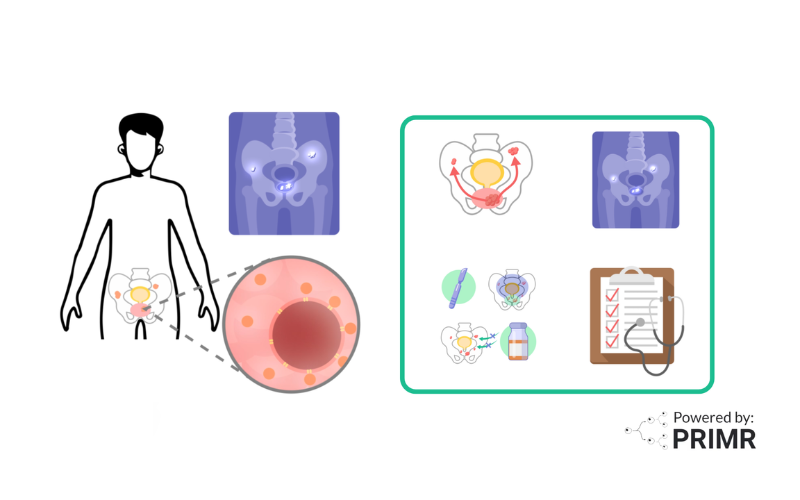Overcoming Challenges in Patient Recruitment for Clinical Trials: Patient Education and PRIMR

By: David Grew MD MPH
Sluggish accrual drains resources and jeopardizes our ability to draw meaningful conclusions from trial data.
∗ ∗ ∗
Clinical research is the iterative engine that drives medical advances forward. However, a significant challenge that researchers and sponsors face is recruiting patients to participate in these trials. Delayed accrual and trial closure due to poor recruitment can lead to increased costs and ultimately, delay medical advancements. In this post, I’ll explore the challenges of patient recruitment, highlight historical data on the costs of delayed accrual, and explore the role of patient education in improving recruitment. I’ll also talk about what our team at PRIMR is doing to simplify patient-facing content to boost accrual.
Challenges in Patient Recruitment
Patient recruitment for clinical trials has long been a daunting task. Here’s the top 4 factors leading to sluggish recruitment:
- Lack of awareness: Many patients are unaware of clinical trial opportunities or have a limited understanding of the benefits of participating in such trials.
- Complex protocols: Clinical trial protocols are often technical and difficult for patients to comprehend, leading to confusion and hesitance.
Trust issues: Patients may be skeptical of experimental treatments or fear potential side effects, and don't want to “be a guinea pig”, leading to reluctance in participation. - Logistical barriers: The time commitment and travel requirements for participating in a trial can be daunting for patients, especially those with chronic illnesses, poor prognoses or terminal situations.
Historical Data on Cost of Delayed Accrual and Trial Closure
Delayed patient accrual and trial closure due to poor recruitment have significant financial consequences. According to a 2018 study published in Clinical Trials, it was estimated that the average cost of recruiting one patient to a clinical trial ranged from $2,150 to $7,450, depending on the therapeutic area. Furthermore, a 2017 report by Forte Research Systems found that about 37% of trials failed to meet their recruitment targets, and 11% of trials closed because they were unable to recruit a single participant.
These delays and closures not only increase costs but also have a negative impact on the overall research timeline and the development of potentially life-saving treatments. Bringing it back to the participant who gave time to enroll on a trial, when a study closes to poor accrual their efforts are all for naught since no meaningful conclusions can be drawn from the study. In that sense, there is a human cost to poor accrual and closure.
The Role of Patient Education in Improving Recruitment
Patient education is a powerful tool in overcoming recruitment challenges. By providing clear and easily digestible information about clinical trials, patients can better understand the benefits and risks, which may boost awareness and trust, ultimately leading to increased participation. Educational materials should be designed to:
- Improve patient awareness of clinical trials and their importance.
- Simplify complex trial protocols to help patients make informed decisions.
- Address concerns and misconceptions surrounding clinical trial participation.
- Preferably available in multiple languages to offer equal education access to non-native English speakers.
PRIMR: Boosting Accrual with Patient-Facing Video Content
PRIMR (Patient Recruitment through Improved Medical Research) is a patient education company dedicated to helping principal investigators and sponsors boost trial awareness and accrual rates through simple, engaging video content. Here’s a look at the PRIMR approach to clinical trial patient education:
- Meet with PI to discuss the trial and key question it aims to answer.
- Write copy in lay terms at 5th grade level.
- Narration in calm, credible clinical voice.
- Add simple graphics that do not overcomplicate the matter.
- Distribute at scale to PIs and eligible participants.
Wrap-up
Patient recruitment is a critical aspect of clinical trials, and overcoming its challenges is essential for the development of new treatments and therapies. By leveraging video patient education strategies at scale, PRIMR is helping researchers and sponsors amplify awareness, simplify complex information, and ultimately improve recruitment rates for clinical trials. You can review our library of IRB approved patient facing clinical trial videos here.
FAQs:
How do delays in patient recruitment impact the progress of clinical trials?
Delays in patient recruitment not only increase costs but also prolong the timeline for research and development of potentially life-saving treatments. Furthermore, trials that fail to meet recruitment targets or close due to poor accrual cannot draw meaningful conclusions, resulting in wasted efforts and resources.
What role does patient education play in improving recruitment for clinical trials?
Patient education plays a crucial role in overcoming recruitment challenges by providing clear and easily understandable information about clinical trials. This helps to increase patient awareness, address concerns, and simplify complex trial protocols, ultimately leading to enhanced trust and participation.
How does PRIMR contribute to boosting patient accrual rates for clinical trials?
PRIMR, a patient education company, employs a video-based approach to simplify complex medical concepts and boost trial awareness and accrual rates. By creating engaging video content with clear narration and simple graphics, PRIMR aims to empower patients and improve recruitment rates for clinical trials.
Other Posts

Nuclear Medicine: PSMA Treatment Explained from a Doctor’s Perspective

Nuclear Medicine: PSMA Imaging and Its Impact on Prostate Cancer Care
